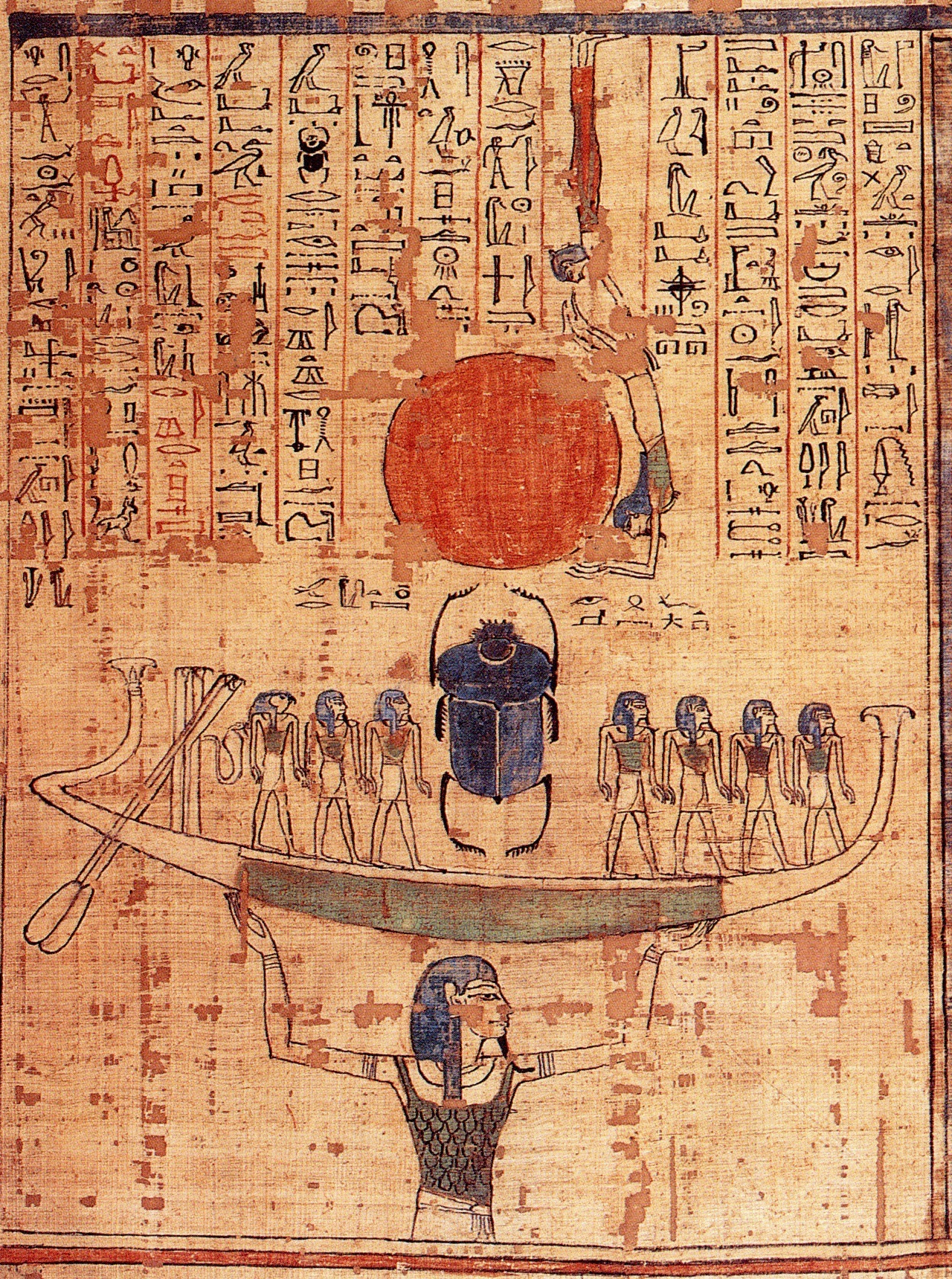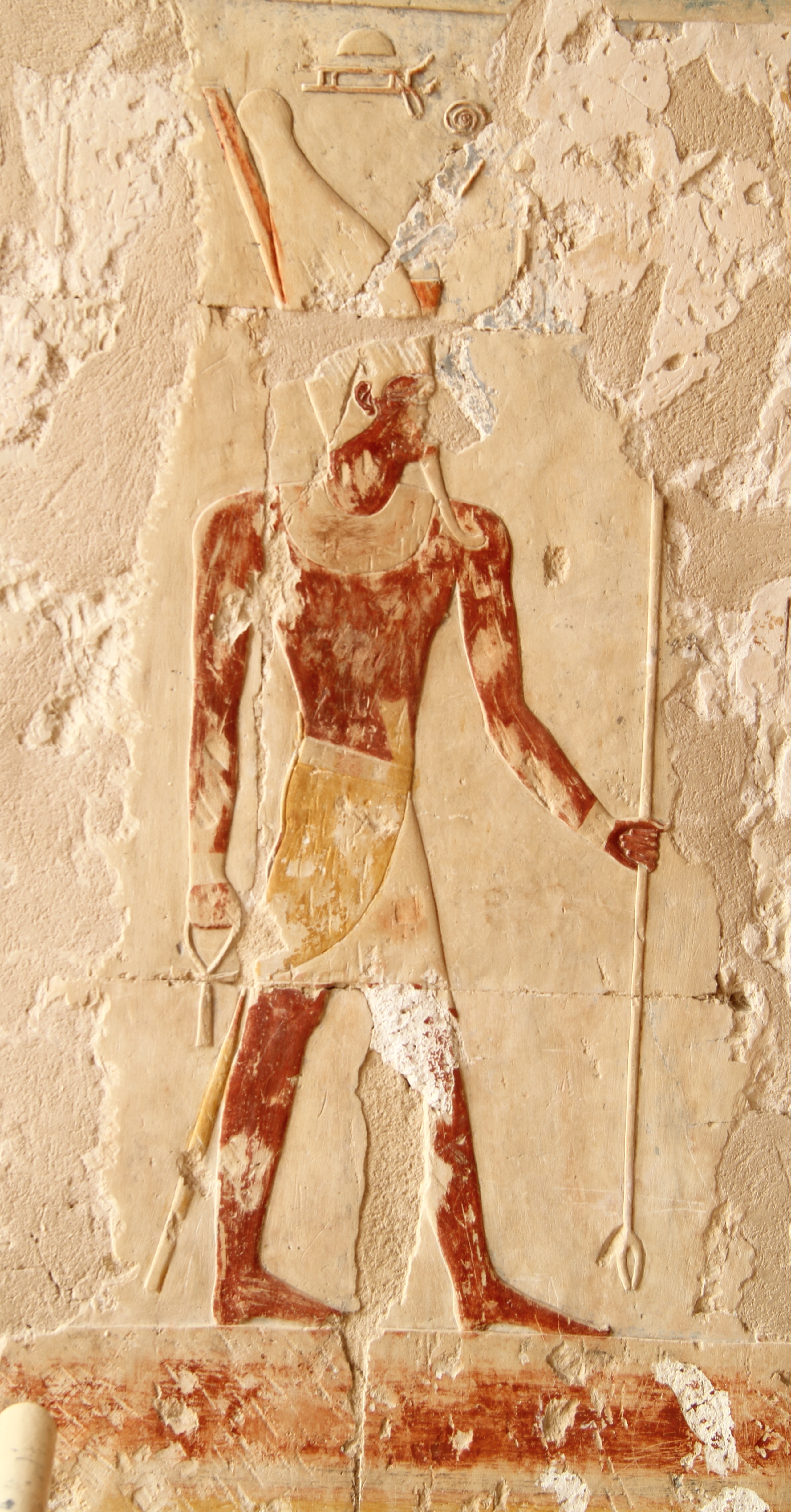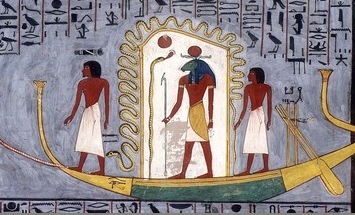|
Am-heh
In Egyptian mythology, Am-heh was a minor god from the underworld, whose name means either "devourer of millions" or "eater of eternity". He was depicted as a man with the head of a hunting dog who lived in a lake of fire. He is sometimes seen as an aspect of Ammit, the personification of divine retribution. Am-heh could only be repelled by the god Atum Atum (, Egyptian: ''jtm(w)'' or ''tm(w)'', ''reconstructed'' ; Coptic ''Atoum''), sometimes rendered as Atem or Tem, is an important deity in Egyptian mythology. Name Atum's name is thought to be derived from the verb ''tm'' which means 'to c .... References Egyptian gods Underworld gods Egyptian underworld Animal gods Mythological dogs {{Egyptian-myth-stub ca:Am-heh ... [...More Info...] [...Related Items...] OR: [Wikipedia] [Google] [Baidu] |
Underworld Gods
The underworld, also known as the netherworld or hell, is the supernatural world of the dead in various religious traditions and myths, located below the world of the living. Chthonic is the technical adjective for things of the underworld. The concept of an underworld is found in almost every civilization and "may be as old as humanity itself". Common features of underworld myths are accounts of living people making journeys to the underworld, often for some heroic purpose. Other myths reinforce traditions that entrance of souls to the underworld requires a proper observation of ceremony, such as the ancient Greek story of the recently dead Patroclus haunting Achilles until his body could be properly buried for this purpose. Persons having social status were dressed and equipped in order to better navigate the underworld. A number of mythologies incorporate the concept of the soul of the deceased making its own journey to the underworld, with the dead needing to be take ... [...More Info...] [...Related Items...] OR: [Wikipedia] [Google] [Baidu] |
Egyptian Mythology
Egyptian mythology is the collection of myths from ancient Egypt, which describe the actions of the Egyptian gods as a means of understanding the world around them. The beliefs that these myths express are an important part of ancient Egyptian religion. Myths appear frequently in Egyptian writings and art, particularly in short stories and in religious material such as hymns, ritual texts, funerary texts, and temple decoration. These sources rarely contain a complete account of a myth and often describe only brief fragments. Inspired by the cycles of nature, the Egyptians saw time in the present as a series of recurring patterns, whereas the earliest periods of time were linear. Myths are set in these earliest times, and myth sets the pattern for the cycles of the present. Present events repeat the events of myth, and in doing so renew ''maat'', the fundamental order of the universe. Amongst the most important episodes from the mythic past are the creation myths, in which the ... [...More Info...] [...Related Items...] OR: [Wikipedia] [Google] [Baidu] |
Ammit
Ammit (; egy, ꜥm-mwt, "devourer of the dead";Erman, Adolf; Grapow, Hermann (1926-1961) ''Wörterbuch der ägyptischen Sprache'', Berlin: Akademie-Verlag, volume 1, page 184.9 also rendered Ammut or Ahemait) was a goddess in ancient Egyptian religion with the forequarters of a lion, the hindquarters of a hippopotamus, and the head of a crocodile—the three largest "man-eating" animals known to ancient Egyptians. A funerary deity, her titles included "Devourer of the Dead", "Eater of Hearts", and "Great of Death". Ammit lived near the scales of justice in Duat, the Egyptian underworld. In the Hall of Two Truths, Anubis weighed the heart of a person against the feather of Ma'at, the goddess of truth, which was depicted as an ostrich feather (the feather was often pictured in Ma'at's headdress). If the heart was judged to be impure, Ammit would devour it, and the person undergoing judgment was not allowed to continue their voyage towards Osiris and immortality. Once Ammit swal ... [...More Info...] [...Related Items...] OR: [Wikipedia] [Google] [Baidu] |
Atum
Atum (, Egyptian: ''jtm(w)'' or ''tm(w)'', ''reconstructed'' ; Coptic ''Atoum''), sometimes rendered as Atem or Tem, is an important deity in Egyptian mythology. Name Atum's name is thought to be derived from the verb ''tm'' which means 'to complete' or 'to finish'. Thus, he has been interpreted as being the "complete one" and also the finisher of the world, which he returns to watery chaos at the end of the creative cycle. As creator, he was seen as the progenitor of the world, the deities and universe having received his vital force or ka. Origins Atum is one of the most important and frequently mentioned deities from earliest times, as evidenced by his prominence in the Pyramid Texts, where he is portrayed as both a creator and father to the king. Several writings contradict how Atum was brought into existence. Some state Atum was created by himself by saying his name, while others argue he came out from a blue lotus flower or an egg. Role In the Heliopolitan creation myt ... [...More Info...] [...Related Items...] OR: [Wikipedia] [Google] [Baidu] |
Egyptian Gods
Ancient Egyptian deities are the gods and goddesses worshipped in ancient Egypt. The beliefs and rituals surrounding these gods formed the core of ancient Egyptian religion, which emerged sometime in prehistory. Deities represented natural forces and phenomena, and the Egyptians supported and appeased them through offerings and rituals so that these forces would continue to function according to ''maat'', or divine order. After the founding of the Egyptian state around 3100 BC, the authority to perform these tasks was controlled by the pharaoh, who claimed to be the gods' representative and managed the temples where the rituals were carried out. The gods' complex characteristics were expressed in myths and in intricate relationships between deities: family ties, loose groups and hierarchies, and combinations of separate gods into one. Deities' diverse appearances in art—as animals, humans, objects, and combinations of different forms—also alluded, through symbolism, ... [...More Info...] [...Related Items...] OR: [Wikipedia] [Google] [Baidu] |
Egyptian Underworld
The Duat ( egy, dwꜣt, Egyptological pronunciation "do-aht", cop, ⲧⲏ, also appearing as ''Tuat'', ''Tuaut'' or ''Akert'', ''Amenthes'', ''Amenti'', or ''Neter-khertet'') is the realm of the dead in ancient Egyptian mythology. It has been represented in hieroglyphs as a star-in-circle: 𓇽. The god Osiris was believed to be the lord of the underworld. He was the first mummy as depicted in the Osiris myth and he personified rebirth and life after death. The underworld was also the residence of various other gods along with Osiris. The geography of the ''Duat'' is similar in outline to the world the Egyptians knew: There are realistic features like rivers, islands, fields, lakes, mounds and caverns, but there were also fantastic lakes of fire, walls of iron, and trees of turquoise. In the ''Book of Two Ways'' (a Coffin Text) there is even a map-like image of the ''Duat''. Resident souls, gods, and demons The ''Duat'' was also a residence for various gods, including Osiri ... [...More Info...] [...Related Items...] OR: [Wikipedia] [Google] [Baidu] |
Animal Gods
The term Animal worship (or zoolatry) is an umbrella term designating religious or ritual practices involving animals. This includes the worship of animal deities or animal sacrifice. An animal 'cult' is formed when a species is taken to represent a religious figure ( Teeter et al., 2002, p. 355). Animal cults can be classified according to their formal features or by their symbolic content ( Thomas 1911, p. 51). The classical author Diodorus situated the origin of animal worship in a myth in which the gods, threatened by giants, disguised themselves as animals. The people then began to worship these animals and continued even after the gods returned to their normal state ( Lubbock, 2005, p. 252). In 1906, Weissenborn suggested that animal worship resulted from humans fascination with the natural world. Primitive man would observe an animal that had a unique trait and the inexplicability would engender curiosity ( Weissenborn, 1906b, p. 282). Wonder resulte ... [...More Info...] [...Related Items...] OR: [Wikipedia] [Google] [Baidu] |
Mythological Dogs
Myth is a folklore genre consisting of narratives that play a fundamental role in a society, such as foundational tales or origin myths. Since "myth" is widely used to imply that a story is not objectively true, the identification of a narrative as a myth can be highly controversial. Many adherents of religions view their own religions' stories as truth and so object to their characterization as myth, the way they see the stories of other religions. As such, some scholars label all religious narratives "myths" for practical reasons, such as to avoid depreciating any one tradition because cultures interpret each other differently relative to one another. Other scholars avoid using the term "myth" altogether and instead use different terms like "sacred history", "holy story", or simply "history" to avoid placing pejorative overtones on any sacred narrative. Myths are often endorsed by secular and religious authorities and are closely linked to religion or spirituality. Many socie ... [...More Info...] [...Related Items...] OR: [Wikipedia] [Google] [Baidu] |






